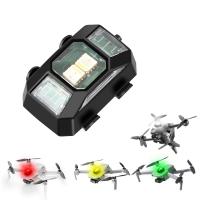How To Wear Glasses And Headphones?
Wearing glasses and headphones simultaneously can be a challenging task for many individuals. The discomfort and inconvenience often lead to frustration, but with the right approach, you can enjoy both your eyewear and audio experience without compromise. This article will delve into practical solutions and tips to help you wear glasses and headphones comfortably and effectively.
Understanding the Problem

The primary issue when wearing glasses and headphones together is the pressure exerted by the headphone ear cups or headband on the glasses' temples (the arms that rest on your ears). This pressure can cause discomfort, pain, and even headaches over time. Additionally, the glasses can create gaps between the ear cups and your ears, leading to sound leakage and reduced audio quality.
Choosing the Right Headphones
The first step in solving this problem is selecting the right type of headphones. Here are some options to consider:
1. Over-Ear Headphones: These headphones have large ear cups that encompass your entire ear. Look for models with soft, cushioned ear pads and adjustable headbands. The cushioning can help distribute pressure more evenly, reducing discomfort.
2. On-Ear Headphones: These sit directly on your ears and are generally more compact. However, they can exert more pressure on the glasses' temples. If you prefer on-ear headphones, choose models with soft padding and lightweight designs.
3. In-Ear Headphones (Earbuds): These are a great alternative as they don't interfere with your glasses at all. High-quality in-ear headphones can provide excellent sound quality and comfort.
4. Bone Conduction Headphones: These headphones sit on your cheekbones and transmit sound through vibrations. They don't cover your ears, making them an excellent choice for glasses wearers.
Adjusting Your Glasses
Properly fitting glasses can significantly reduce discomfort when wearing headphones. Here are some tips for adjusting your glasses:
1. Temple Adjustment: Ensure that the temples of your glasses are not too tight. They should rest comfortably on your ears without exerting excessive pressure. If needed, visit an optician to have them adjusted.
2. Nose Pads: If your glasses have nose pads, make sure they are properly adjusted to keep the glasses in place without slipping. This can prevent the temples from pressing too hard against your head.
3. Frame Material: Consider glasses with flexible or lightweight frames. Materials like titanium or memory metal can provide a more comfortable fit.
Wearing Techniques
How you wear your glasses and headphones together can also make a significant difference. Here are some techniques to try:
1. Headphone Placement: Position the headphone ear cups slightly above or below the temples of your glasses. This can help reduce the pressure on the glasses' arms.
2. Headband Adjustment: Adjust the headband of your headphones to ensure a snug but comfortable fit. A well-adjusted headband can distribute pressure more evenly.
3. Ear Cup Rotation: Some headphones allow you to rotate the ear cups. Experiment with different angles to find a position that minimizes pressure on your glasses.
4. Glasses Over Headphones: In some cases, wearing your glasses over the headphone headband can alleviate pressure. This technique works best with over-ear headphones.
Additional Accessories
There are several accessories available that can enhance your comfort when wearing glasses and headphones together:
1. Ear Pad Covers: Soft, cushioned ear pad covers can provide extra comfort and reduce pressure on your glasses' temples.
2. Headphone Cushions: Some headphones come with replaceable cushions. Consider investing in thicker or memory foam cushions for added comfort.
3. Glasses Straps: Using a glasses strap can help keep your glasses in place and prevent them from slipping, reducing the need for constant adjustments.
Practical Tips for Daily Use
In addition to the above solutions, here are some practical tips to make your daily experience more comfortable:
1. Take Breaks: If you wear glasses and headphones for extended periods, take regular breaks to relieve pressure on your ears and temples.
2. Alternate Headphones: If possible, alternate between different types of headphones (e.g., over-ear and in-ear) to give your ears and temples a break.
3. Maintain Good Posture: Proper posture can reduce the strain on your head and neck, making it more comfortable to wear glasses and headphones.
4. Stay Hydrated: Dehydration can exacerbate discomfort. Drink plenty of water to keep your body and skin hydrated.
Wearing glasses and headphones together doesn't have to be a painful experience. By choosing the right headphones, adjusting your glasses, and employing effective wearing techniques, you can enjoy both your eyewear and audio experience comfortably. Additionally, investing in accessories and following practical tips can further enhance your comfort. Remember, the key is to find a combination that works best for you and to make adjustments as needed. With these strategies, you can say goodbye to discomfort and hello to a seamless glasses and headphones experience.


















